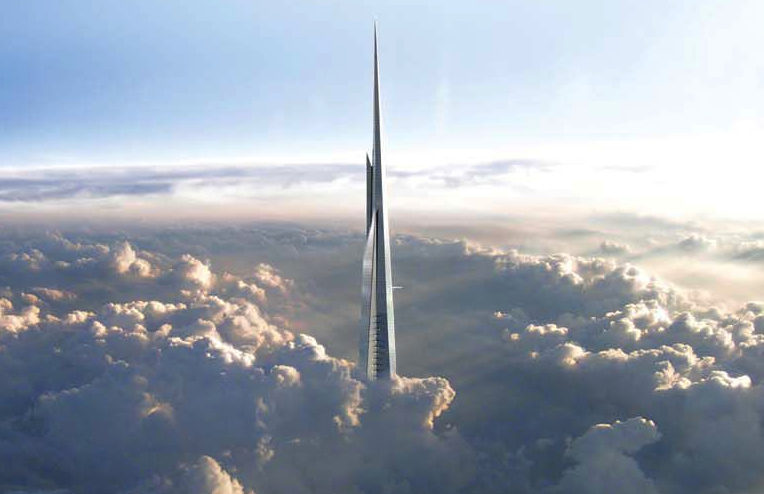The Skyscraper Indicator Strikes in Saudi Arabia
In the recently published book “Austrian School for Investors”, one chapter inter alia discusses Dr. Mark Thornton’s “Skyscraper Indicator” in great detail. To this it should be mentioned that at the time the original German version of the book was written, crude oil was still trading above the $100 mark.
The erection of skyscrapers, specifically the construction of the “tallest building in the world” (somewhere in the world, there almost always seems to be someone busy with putting up the tallest building ever lately) is of great interest both from the perspective of Austrian business cycle theory and Socionomics (a theory of mass psychology and how it influences trends in asset prices and economic fundamentals).

What the Jeddah Tower is going to look like from above
(provided those funding it can remain solvent long enough).
Image credit: Jeddah Economic Company / Adrian Smith and Gordon Gill Architecture
To briefly explain the difference in approaches: we regard Socionomics as a “theory of contingent circumstances” – this is to say, it is a psychological and thymological discipline rather than an economic theory. It would therefore not be sensible to compare it to economic theory or to assert that it represents a competing economic theory.
Similar to history, Socionomics involves what Mises called “understanding”. It is advantageous to use it inconjunction with sound economic theory, it should be clear though that its task is definitely not to reinvent economic laws. It is by the way no surprise that the people who have come up with it (Robert Prechter and his colleagues) are speculators and financial market observers – people who Mises referred to as being akin to “historians of the future”.
A recent report on the “Interesting Engineering” web site brings us an awestruck reminder of the major engineering feat currently underway in the land of moderate head-choppers, which is leading the “tallest building in the world” sweepstakes at the moment.
“Saudi Arabia is currently on the way to building the world’s tallest building which would rival Dubai’s Burj Khalifa, currently the tallest building in the world. It is to be called Jeddah Tower and is currently already under construction. Costing at least $1.23 billion, it will also be a part of a $120 billion proposed development known as Jeddah Economic City.Interestingly, it is being designed by Adrian Smith, the same American architect who designed Burj khalifa. It will also become the first structure to reach the 1 kilometer high mark.
The Jeddah tower which would resemble a desert plant shooting into the sky as a symbol of Saudi Arabia’s growth and fortune, has a triangular footprint and a sloped exterior design to reduce wind load. It also has a high surface area which would make it ideal for residential units. Though no official floor count has been given, the architect Adrian Smith stated in an interview thatit would be about 50 floors more than Burj Khalifa. This leads us to believe that it would have more than 200 floors. The building would have a total of 59 elevators including double deck elevators and 12 escalators, it would also boast the world’s highest observation deck to which high speed elevator’s would travel up to 33 feet per second in both directions (slightly over 35km/hr). Jeddah tower would have 3 sky lobbies where elevator transfers can be made.
[…]
The Creator [sic, ed.] and leader of the project, Saudi Prince Al-Waleed bin Talal, intends for it to bring significant change in terms of development and tourism to the city of Jeddah. It is estimated that the construction will take five years and 3 months to complete. Although other experts believe it might take significantly longer considering the duration of the construction of Burj Khalifa.
Incidentally, Saudi Arabia is currently losing foreign exchange reserves at a pace of 5.7 Jeddah Towers per month – assuming the tower’s price tag remains close to the current estimate, which is just as heroic an assumption as the estimate of how long it will take to build it.













Leave A Comment